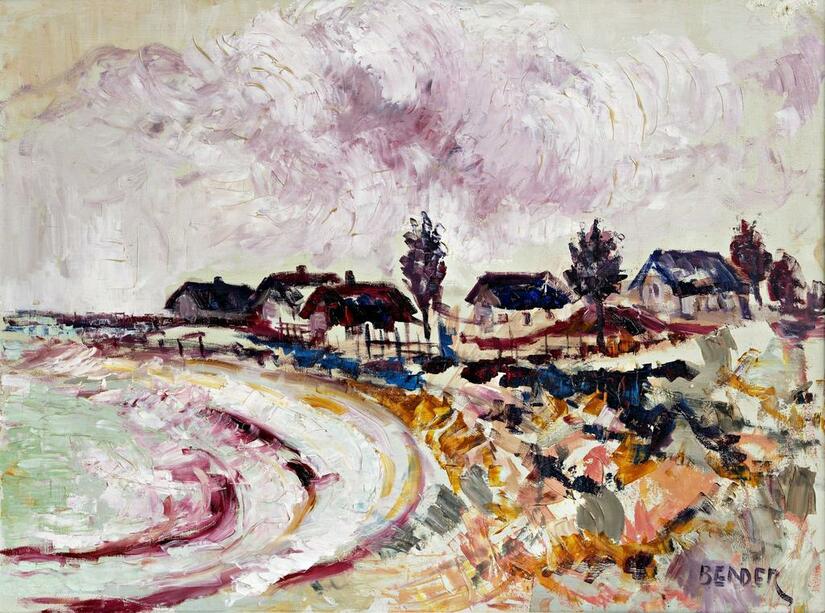Adolf Bender: Dorf, Entstehungsdatum unbekannt (Village, date of origin unknown)

Oil painting, 96 x 75 cm
Many of Adolf Bender’s paintings were influenced by both Impressionism and Expressionism. This portrait of a lonely hamlet bears strong impressionist characteristics: five small houses and a wide field, literally dabbed. Violet, red, orange and white are the primary colors, giving daylight and atmosphere a special dimension. It looks soft, peaceful and dreamy. Yet the background of this picture is not idyllic at all: it shows a settlement in the surroundings of Papenburg in Emsland, where the concentration camp Börgermoor was located. Bender was interned there and painted this hamlet from memory.
Adolf Bender (*1903 in Mainz, †1997 in St. Wendel, today both in Germany) was a painter and an empassioned democrat from the nearby district town of St. Wendel. Apart from his two exhibitions in 1962 - then the academy's third exhibition - and in 1985 ("The Peat Bog Soldiers - Democrats in the Concentration Camp"), his democratic convictions connected him with the Europäische Akademie Otzenhausen. As a politically active opponent of the National Socialists, Bender fled to France, was interned in the concentration camps of Börgermoor and Esterwegen after his return, and was finally drafted into the Wehrmacht in 1941. "To make sure that this does not happen again ", as he said, he combated fascism by means of art and education after the war. He processed his experiences in the Börgermoor in the "Peat Bog Soldier series", which is widely known. The Adolf-Bender-Zentrum für Demokratie und Menschenrechte (Adolf Bender Center for Democracy and Human Rights) in St. Wendel continues his legacy.